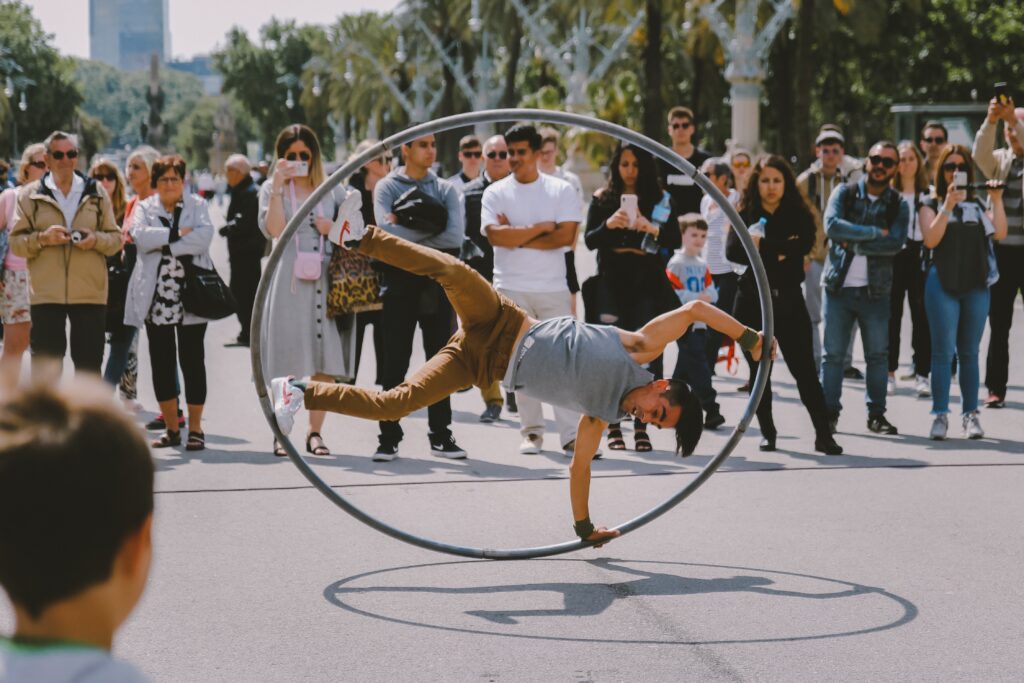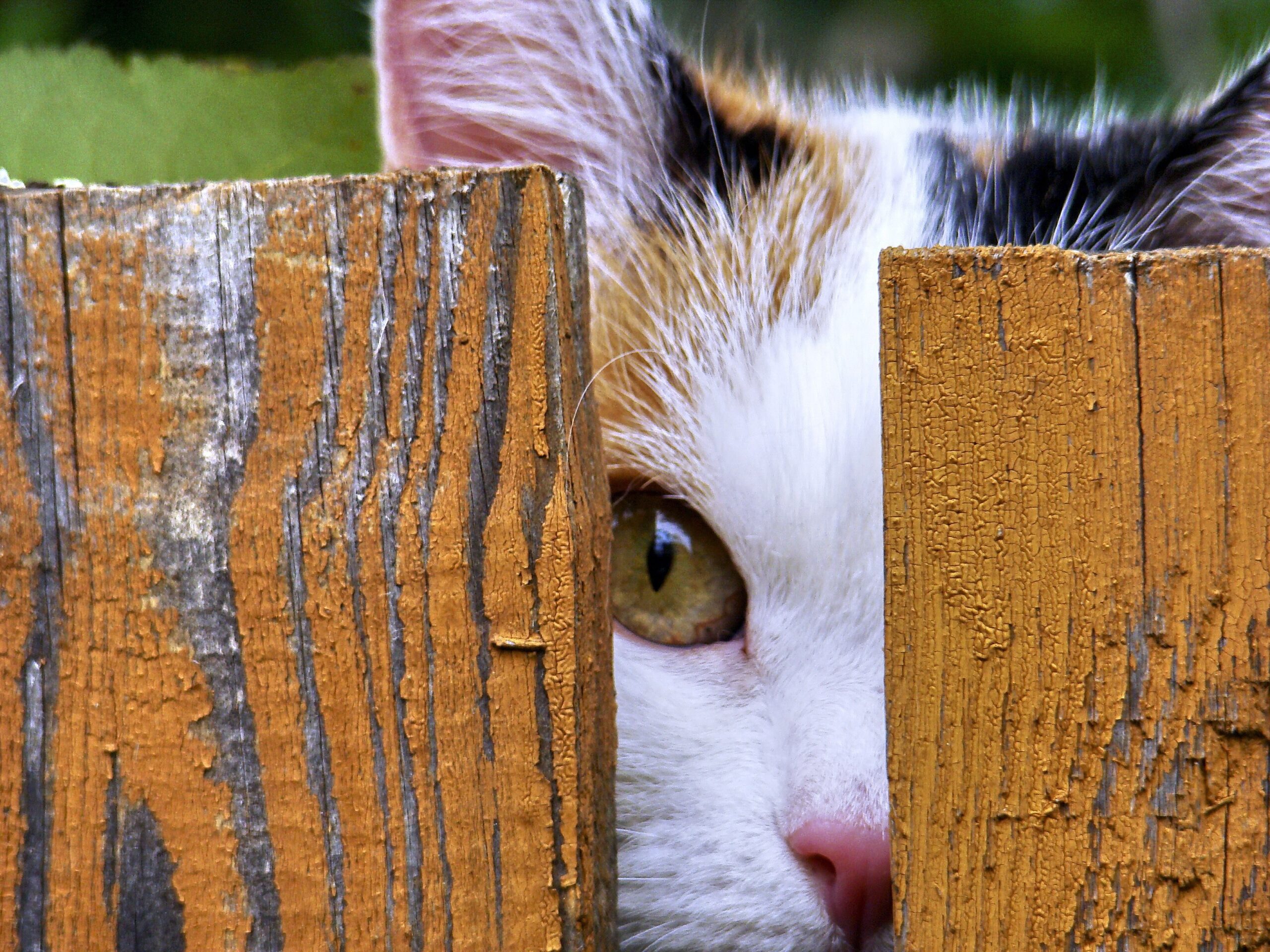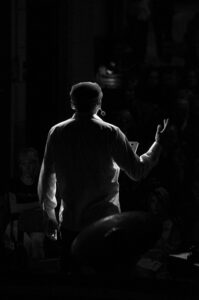Introduction
Welcome to “The Observer’s Mindset: Understanding the Preference for Observation Over Participation.” Many introverts are exploring the introvert to extrovert transition, a unique journey transforming their social interactions. This article is for those who think analytically and believe in the possibility of personality change. You’ll find straightforward, simple English here, perfect for those who appreciate clarity and positivity. We’ll explore why some people prefer watching life unfold rather than jumping into the fray. Whether you’re an observer by nature or considering a change, this article offers insights into the world of introverts and observers, empowering you with knowledge and confidence. 🌟👀🌍✨

Introduction to the Observer’s Mindset
In delving into the observer’s mindset, it’s essential to first understand its core essence. Observers are individuals who, by nature or choice, often find themselves watching events unfold rather than actively participating in them. This doesn’t mean they are disengaged; on the contrary, observers are typically deeply engaged, but in a different way. They are the ones who absorb, analyze, and reflect on what’s happening around them.
To better comprehend your own observer tendencies, consider taking our introvert test. This test is designed to provide deeper insights into your personality traits and how they influence your inclination towards observation or participation. It’s a step towards self-awareness, allowing you to understand the nuances of your character.
Observers often possess a unique set of strengths. They tend to be excellent listeners, deep thinkers, and keen analysts. Their ability to notice subtleties that others might overlook makes them valuable in situations that require thoughtful consideration. In group settings, while the participants are voicing their opinions and ideas, observers are quietly piecing together a bigger picture, often leading to more informed and comprehensive insights.
However, this preference for observation can sometimes be misunderstood. Observers might be labeled as shy, aloof, or indifferent. It’s important to recognize that their quietness is not a lack of interest or engagement but a different mode of interaction. Observers engage with the world in a way that allows them to process information deeply, often leading to innovative ideas and thoughtful solutions to complex problems.
Embracing the observer’s mindset means acknowledging and valuing these traits. It’s about understanding the power of observation and how it complements active participation. Observers play a crucial role in balancing the dynamics of social and professional environments, bringing depth and insight that might otherwise be missed. As we delve deeper into this mindset, we’ll explore how observers navigate different aspects of their lives and how they can find a balance between observing and participating.

Psychological Traits of Observers vs. Participants
The psychological landscape of observers differs significantly from that of active participants. Observers, often introverts at heart, possess a distinct set of traits that shape their interaction with the world. Their preference for observation over participation stems from deeper cognitive and emotional processes. This nuanced understanding of one’s psychological makeup is crucial, and joining our intro to extro community can be a valuable step. Here, you can engage in discussions about such traits and learn from others who share similar tendencies.
Observers tend to be introspective, spending a lot of time in their thoughts. They are often reflective, considering various angles and perspectives before forming opinions or making decisions. This thoughtfulness can sometimes be mistaken for indecision or hesitation, but it is actually a deliberate process of internal deliberation. Observers are also generally more sensitive to their surroundings, which can make them excellent at reading situations and understanding unspoken dynamics.
On the other hand, participants are typically more extroverted. They gain energy from social interactions and are often more spontaneous and decisive. Participants are comfortable in the spotlight and tend to express their thoughts and opinions openly. They thrive in environments where quick decisions and active engagement are the norms.
It’s important to note that these traits are not fixed; they exist on a spectrum. Many people exhibit a mix of observational and participatory traits, and these can shift depending on the context or over time. The key is understanding where you naturally fall on this spectrum and how it impacts your interactions and comfort levels in various settings.
This understanding allows observers to leverage their strengths and address areas where they might want to grow. For example, an observer might choose to develop more participatory skills to feel more comfortable in group settings, while still honoring their natural inclination towards observation. Similarly, participants can learn from observers, appreciating the value of reflection and thoughtfulness in their interactions. The interplay of these traits enriches social and professional environments, creating a dynamic where both observers and participants can thrive.

The Role of Introversion in Observational Preferences
The tendency to prefer observation over participation is often intertwined with introversion, a personality trait characterized by a focus on internal feelings rather than external sources of stimulation. Introverts, who make up a significant portion of observers, process and respond to information differently than their extroverted counterparts. For a deeper dive into this topic, our intro to extro roadmap offers a unique guide, differing from traditional approaches, to understand and navigate this aspect of personality.
Introverts are typically energized by solitary activities and find prolonged social interaction draining. This isn’t to say they dislike socializing; rather, they prefer meaningful, in-depth conversations over small talk and large gatherings. Their observational preference stems from this need for internal processing. In group settings, introverts are more likely to listen and observe, processing the information internally before contributing. This internal processing is a strength, allowing them to develop well-thought-out ideas and perspectives.
Moreover, introverts often have a rich inner life, with a vivid imagination and deep thought processes. They are reflective and self-aware, which makes them keen observers of not only their surroundings but also their internal experiences. This introspection can lead to profound insights and creative solutions, as they are able to consider problems and situations from various angles, undistracted by the external noise.
However, it’s essential to understand that introversion is not a limitation but a different way of engaging with the world. In a society that often values extroversion, introverts can sometimes feel pressured to act against their natural inclinations. Recognizing and appreciating the value of an introverted perspective is crucial. Introverts bring balance to social and professional environments, offering depth, thoughtfulness, and a unique approach to problem-solving.
Embracing introversion as a strength allows observers to engage with the world in a way that is authentic to them. It’s about finding environments where their observational skills are valued and where they can contribute meaningfully without compromising their natural tendencies. The observer’s mindset, influenced by introversion, is not just about watching from the sidelines; it’s about engaging with the world in a thoughtful, reflective, and impactful way.

Cultural Influences on Observational Behaviors
Cultural factors play a significant role in shaping one’s preference for observation over participation. Different cultures place varying levels of emphasis on extroversion and introversion, which in turn influences how individuals interact in social and professional settings. Observers in different cultural contexts may experience and express their observational tendencies in diverse ways, highlighting the importance of understanding the cultural underpinnings of this behavior.
In some cultures, extroversion is highly valued, and traits like assertiveness and outspokenness are encouraged from a young age. In such environments, individuals who lean towards observation might feel pressured to conform to more extroverted norms. This can lead to a sense of alienation or the need to adopt a persona that doesn’t align with their natural inclinations. However, it’s essential to recognize and embrace the strengths that come with a more observant approach, such as the ability to listen actively, process information deeply, and provide thoughtful insights.
Conversely, other cultures may place a greater value on introspection and reflection. In these settings, observational tendencies are more likely to be seen as strengths. Individuals in such cultures might find it easier to embrace their natural inclinations without the pressure to conform to an extroverted ideal. The observer’s role is acknowledged as crucial in collective decision-making processes, where their insights and reflections contribute significantly to the outcome.
Furthermore, the rise of global communication and multicultural environments has brought about a mix of these cultural attitudes, creating spaces where both observational and participatory traits can be valued. This cultural diversity allows for a richer exchange of ideas and perspectives, where observers and participants can learn from each other’s strengths.
Understanding the cultural influences on observational behaviors is key to fostering environments where all personality types can thrive. It encourages a more inclusive approach, where the unique contributions of observers are recognized and valued. By acknowledging the cultural context of observational tendencies, we can create more empathetic and effective social and professional interactions, where diversity of thought and behavior is not just accepted but celebrated.
Balancing Observation and Participation
Finding the right balance between observation and participation is crucial for individuals who naturally gravitate towards an observer’s mindset. This balance is not about forcing a change in inherent personality traits but about adapting to various situations in a way that feels authentic and fulfilling. It involves recognizing when to step back and observe and when to actively engage and participate.
One key aspect of achieving this balance is self-awareness. Understanding your own comfort levels, strengths, and areas for growth allows you to navigate different scenarios more effectively. For instance, in situations where your observational skills are particularly valuable, such as in strategic planning or problem-solving, leaning into these strengths can be beneficial. Conversely, there may be instances, like networking events or team collaborations, where a more participatory approach is advantageous. In these cases, setting personal goals for engagement can help ease the transition from observer to participant.
Another important factor is developing skills that complement both observational and participatory traits. Communication skills, for example, can help observers articulate their insights more effectively when they choose to participate. Similarly, learning to be comfortable with a certain level of visibility and assertiveness can be beneficial for those who typically prefer to stay in the background.
It’s also essential to recognize the value of both observation and participation in different contexts. Each has its strengths and contributes uniquely to personal, professional, and social environments. Observers bring depth, thoughtfulness, and a different perspective, while participants bring energy, action, and immediacy. Valuing both these approaches creates a more dynamic and inclusive atmosphere.
Ultimately, the goal is not to transform observers into participants or vice versa but to allow individuals to navigate between these roles fluidly, based on the context and their personal growth objectives. This flexibility enhances personal well-being and effectiveness, allowing individuals to engage with the world in a way that aligns with their personality while also embracing opportunities for growth and development.
Overcoming the Stigma of Being an Observer
Observers often face societal stigmas that can undervalue their quieter, more reflective nature in favor of more extroverted traits. Overcoming these misconceptions is essential for observers to feel validated and confident in their approach to life and interactions. The first step in this process is internal acceptance and embracing the value of one’s observational strengths.
The stigma often stems from a misunderstanding of what it means to be an observer. Observers are sometimes mistakenly perceived as uninterested, passive, or lacking initiative. However, the truth is that their quiet presence often reflects deep engagement and thoughtful analysis. By actively challenging these stereotypes, both personally and within our communities, we can shift perceptions. This involves highlighting the observer’s contributions, like their ability to notice nuances, provide insightful feedback, and approach situations with a balanced and considered perspective.
Self-advocacy is also a key part of overcoming stigma. Observers can articulate the value they bring to various settings, whether in professional environments or personal relationships. This might involve speaking up about their thought process and how their observational approach has led to meaningful contributions or innovative solutions. It’s about communicating the strengths of being reflective, detail-oriented, and introspective.
Furthermore, building supportive networks is crucial. Surrounding oneself with individuals who appreciate and understand the observer’s mindset can provide a nurturing environment where one can thrive. These networks can be a source of encouragement, offering a safe space to share experiences and strategies for navigating a world that often prioritizes extroversion.
Lastly, observers can engage in activities that showcase their strengths. This might involve taking on roles that require careful planning, strategy, or creativity, where their skills can shine. By actively seeking out and excelling in such opportunities, observers demonstrate the invaluable contributions they make, thereby gradually changing the narrative around the observer’s role in society.
In summary, overcoming the stigma involves a combination of self-acceptance, advocacy, building supportive networks, and actively seeking opportunities to showcase observational strengths. Through these steps, observers can assert their value and shift perceptions, highlighting the important role they play in a balanced and diverse world.
Embracing the Observer’s Mindset in a Participatory World
In a world that often celebrates action and participation, embracing the observer’s mindset can be a powerful counterbalance. It requires acknowledging the unique strengths that come with a preference for observation and finding ways to integrate these qualities into various aspects of life. This embrace is not about withdrawing from participation but about finding a harmonious blend that leverages the best of both worlds.
One of the key aspects of embracing this mindset is recognizing the value it brings to decision-making processes. Observers tend to take a thoughtful, considered approach to their decisions, weighing different perspectives and potential outcomes. This can lead to more informed, well-rounded decisions in both personal and professional spheres. By valuing this approach, observers can feel more confident in their natural inclinations and more willing to contribute their insights in participatory settings.
Another important element is finding environments and communities that appreciate and nurture the observer’s perspective. This could mean seeking out workplaces, social groups, or creative endeavors where reflection, deep thinking, and careful consideration are valued. In such environments, the observer’s mindset is not just accepted but celebrated, allowing individuals to thrive and contribute meaningfully.
Moreover, embracing this mindset involves personal growth and development. Observers can work on expanding their comfort zones, gradually increasing their participation in various settings while staying true to their reflective nature. This might involve taking on leadership roles in areas where they feel most competent or joining group activities that align with their interests and values.
Lastly, it’s about influencing the broader narrative. By sharing their experiences and perspectives, observers can help others understand the value of a more contemplative, reflective approach to life. This can lead to a greater appreciation of diverse personality types and interaction styles, fostering a more inclusive, empathetic society.
Embracing the observer’s mindset in a participatory world is about finding balance, seeking out supportive environments, engaging in personal growth, and contributing to a broader understanding of diverse personality traits. It’s a journey towards self-acceptance and empowerment, where the unique strengths of observation are recognized as essential to the richness and diversity of human experience.
Conclusion
In exploring “The Observer’s Mindset: Understanding the Preference for Observation Over Participation,” we’ve journeyed through the multifaceted aspects of being an observer in a world that often values participation. This exploration has illuminated the unique strengths and challenges that come with a preference for observation, underscoring the importance of embracing and integrating this mindset into various aspects of life.
We’ve seen how the observer’s mindset, often linked with introversion, brings depth, thoughtfulness, and a valuable perspective to both personal and professional environments. Observers, with their ability to listen, analyze, and reflect, contribute significantly to the richness of our collective experiences. By understanding and valuing these qualities, observers can find a sense of empowerment and fulfillment.
Moreover, we’ve recognized the cultural and societal influences on observational behaviors and the importance of balancing observation with participation. This balance isn’t about changing who we are but about adapting and growing in ways that allow us to engage with the world authentically and effectively. It involves finding environments that appreciate our natural inclinations, developing complementary skills, and learning to navigate between observation and participation fluidly.
As we conclude, it’s clear that the observer’s mindset is not a limitation but a profound asset. Observers bring a unique set of skills and perspectives that are crucial in a balanced and diverse society. By embracing and nurturing this mindset, we open the door to a world where different personality types and interaction styles are not just accepted but celebrated. Observers and participants alike can learn from each other, creating a dynamic interplay that enriches our understanding and interactions.
Ultimately, understanding and embracing the observer’s mindset is a journey towards a more inclusive, empathetic, and diverse world. It’s a celebration of the quiet strength that lies in observation and the invaluable contributions it makes to our collective experience.




